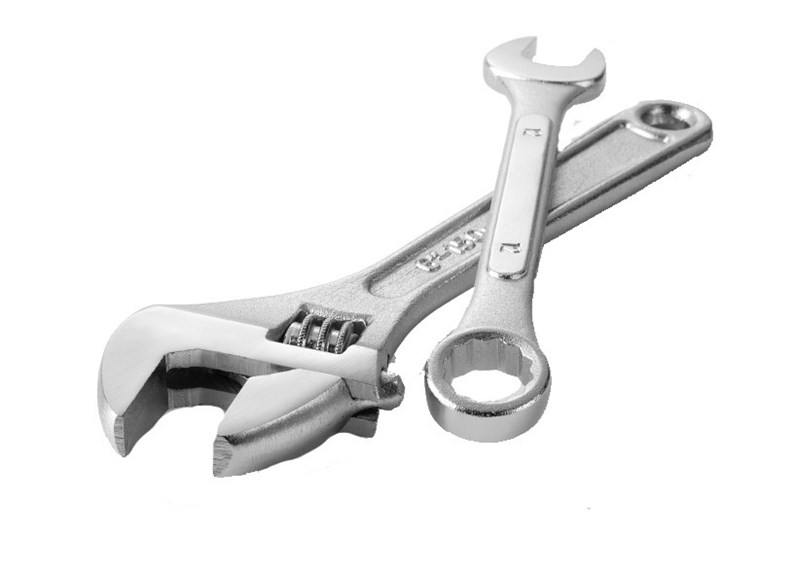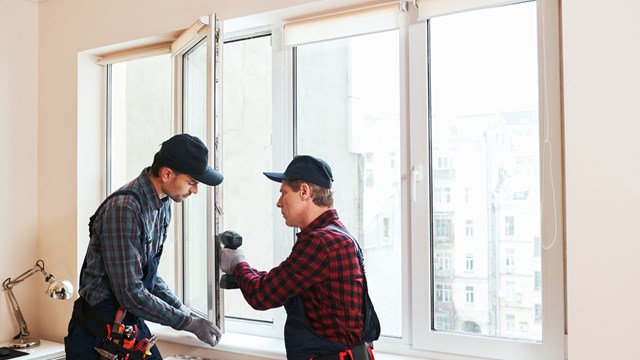In many ways, the homes in a detached condo development resemble any other single-family dwellings: they have their own driveways, their own water and electric meters, distinct roofs, and heating and cooling systems. Other types of condo associations take the form of attached townhouses, or high-rise apartment buildings. Regardless of the architecture, a thorough understanding and regular maintenance of all the components that ultimately deliver the essential amenities like heat, air conditioning water, plumbing, and electricity is required in order for the association's operating systems to run safely and efficiently.
These tasks are divided between individual homeowners and association boards and managing agents, coordinating with the association's superintendent and staff to assure that the development's roofs are free of leaks and that there's heat in the middle of January.
"I often refer to [a condo development] as one would look at a luxury cruise liner," says Edward Frank, president of the River Vale based Arthur Edwards, Inc. "It needs a captain, a skipper, a first mate and passengers. The passengers are the owners; the skipper is the manager; the first mate is the super, and the board of directors serves as the captain."
Different Buildings, Different Systems
But the main thing, of course, is the boat itself. Like any inhabited structure, a townhome development or high-rise condo building relies upon several major—often interconnected—mechanical systems to function. For most buildings, the major components are the HVAC system, the plumbing, the electricity, and the roof.
The age of a building or development as a whole often dictates the reliability of one or all the aforementioned systems. While some condo communities are celebrating their thirtieth or fiftieth anniversaries, others are youngsters. In addition to age, climate, quality of maintenance, and day-to-day wear-and-tear all figure into how well a community's basic systems will hold up.
And every community has a different profile. The arrangement of utilities and mechanical systems varies greatly depending on whether a community consists of a handful of duplexes arranged around a suburban cul-de-sac or of a 20-story high-rise right downtown. As Angela Alfano, vice president of management for the Morristown-based Taylor Management, says, "Every building presents new and specific situations."
A Roof Over Your Head
According to Richard Thompson, a property manager, real estate consultant and founder of Regenesis.net, a website devoted to condo communities and homeowners associations, "A good roof is more than a component…it's essential. Roofing professionals generally agree that a good roof requires proper design, quality materials, and quality application in order to perform successfully. Yet once a roof is installed, nothing is more critical to its long-term performance than establishing a program of regular inspection and proper maintenance. The National Roofing Contractors Association (NRCA) believes that the most effective way to keep a roof performing for a long period of time is to have a maintenance program with a professional roofing contractor."
Roofing in HOAs depends on whether the buildings in the community have pitched or flat roofs.
"Roofs can be punctured or disrupted fairly easily, says R. Neal Eisenberg, preservation and restoration consultant to Garden State Commercial Services, with offices in Bayonne. "Some roof materials can be disrupted by the weight of a footprint."
Another important component of a building's roof is drainage. With a pitched roof, water, debris, and other materials roll down the sloped sides into the gutters, and from there are conveyed to the ground, away from the building itself.
Flat roofs are another matter, says Eisenberg. Pooled water—whether from precipitation, construction, or recreation—can have disastrous effects on a building's roof if it doesn't have a place to drain. Water also can find its way in along the roof copings and the mortar joints of the building.
Most roofs, whether flat or pitched, are made up of several different types of material layered together like the different levels of a person's skin. Those materials usually include a substructure of steel beams (in the case of flat roofs) or wooden struts (in the case of pitched roofs) under an outer deck that is then topped with a "vapor barrier" like tarred paper, over which goes a layer of insulation several inches thick, which is in turn topped by a waterproof membrane—and then functional and decorative shingles, if the roof is pitched.
Even with all those layers of protection, roofs can only be expected to last between 10 and 25 years. In most associations, the topmost roofing materials break down into one of several categories: asphalt or wood shingles, clay or concrete tile, slate, metal, or synthetic roofing, which can encompass a number of man-made materials.
"There's not really one best material or procedure out there," says Eisenberg, but by far, according to Regenesis.net, the most popular HOA roofing material is asphalt shingles, which hold "an overwhelming share of the U.S. roofing market."
"Most asphalt shingles are 'fiberglass-reinforced' which consist of a fiberglass mat with a top and bottom layer of asphalt and mineral granules. Zinc or copper granules are applied to asphalt shingles to protect against algae growth. Asphalt shingles are available with 25- to 50-year warranties depending on the thickness of the shingle." Most roofing materials are also given a fire-resistant rating.
There are some other options for association roofs—such as an ice and snow shield, for example—that are generally built right in at the time of construction, but the best route seems to be to start with the installation of a strong, high-quality roof.
"[A builder] might use an ice and water shield throughout the roof as an added protection against leakage," says Bob Martin, owner of Roof Maintenance, a registered roofing consultant firm in Farmingdale. "But it's the roof itself that will offer the most protection. Be sure you're putting on three-quarter-inch exterior plywood and a heavier type of shingle," Martin adds. "It will provide longer performance and more stability."
"There are always new and different developments," Martin continues. "When I started in this business, there were one or two types of shingles, now there's any number of them. There were six types of roofing systems—now, there's around 280. Metal roofing has come to the forefront over the last five years, and instead of shingles, a condominium may want to use metal."
Aside from product choices, says Thompson, "the roofer's experience level is critical to the installation. Check references and the product warranty carefully. If possible, use an installer who is certified by the manufacturer. This way, no matter what the problem, you're covered. Choose the right roofing by weighing aesthetics, cost, durability, warranty, and maintenance."
Bring On the Heat
Most residential HVAC systems reside in mechanical units outside the dwelling itself, or by furnaces or boilers within the homes themselves.
According to Advanced Heating and Cooling, a company based in Rochester, New York, a furnace works by drawing air into a heat exchanger, where it is warmed by flame. The blower then sends the warmed air through the house via the ductwork, where it enters the room through a register in the floor or wall. Indoor air is circulated continuously through the system, so a filter is used to collect dust, pollen and other airborne particles.
Though there are many ways to heat a living space, the main component of most home heating systems is the heat pump, which is fueled by electricity, and used for either heating or cooling a unit by transferring heat between two reservoirs. In the warmer months the heat pump acts like an air conditioner, moving heat from inside the home to the outside. During winter months, heat from outdoors is transferred to the interior. Even a 32º- Fahrenheit day still produces enough heat to warm a home via a heat pump.
By contrast, a boiler works by heating water and circulating it through pipes to radiators within a baseboard, where it warms the surrounding air. Unlike a furnace air is not forced continuously through the home and may seem heavier.
To make sure everything's up to snuff with your heating systems, Alfano suggests "firing up" the boiler in July or August, rather than waiting until October first, which is required by New Jersey state law.
Keeping Cool
Air conditioning is probably far from most peoples' minds now that winter is coming on, but the "AC" part of HVAC is just as important as the rest. While there's a wide array of AC options for condo buildings and HOAs, there are two basic AC unit types: window air conditioners and central AC, along with several sub-types.
Central air conditioning "split systems" have some outdoor components—such as the compressor and condenser coils, which you've probably heard humming quietly behind outdoor air conditioning enclosures—and some indoors—such as the evaporators and air handlers. The system either makes use of the building furnace's forced-air blower to move chilled air through the home, or has its own blower unit. There are also some ductless (also known as "mini-split") systems, where an outdoor compressor serves several, smaller evaporator coils that are installed on exterior walls.
The most common system type nowadays, says Al Toscano of Jayson Oil Co. Inc. in Union, is "DX," or direct expansion, in which heat is transferred by the direct expansion of the refrigerant itself. Many DX units are packaged units, rather than split systems. This means that the actual air-conditioning components, rather than being split, are contained in one enclosure, usually outside the unit or in a utility closet.
Heat pump systems, which basically act as both heaters and air conditioners, are yet another option. In cooling mode, they expel heat from the refrigerant to the outside; in heating mode, they extract heat from the outside and use it to heat up the refrigerant. However, heat-pump systems are more efficient in the southern part of the country than in our area, says Joe Marazzo, vice president and CEO of KeySpan Home Energy Services in Warren.
In addition to central air conditioning and individual room air conditioners, some duplex or quadruplex developments may have individual central air conditioning units, meaning units that condition an entire unit, but only that unit. This may be built into the building at the time of construction, but as far as retrofits are concerned, says Chuck Cistoldi, of Goodman Co. LP/Amana Heating and Air Conditioning in Boston, "Most condo associations won't allow that, because if an apartment owner wants to put in central air conditioning, they'll have to put a condenser unit someplace—on the roof or outside." Obviously, it would be inconvenient to have 10 people putting their own condensing units outdoors.
Piping Up
Hot and cold running water is a necessity in our part of the world, but not so long ago, it was a luxury afforded to only the few. When something goes amiss with homeowners' plumbing, however, residents can feel like they've been transported back to the Dark Ages.
There's more to plumbing than just siphoning water from a reservoir to a tap, according to Heimer Engineering, P.C., a firm based in Commack, New York that services HOAs and single-family homes throughout New York and New Jersey. The term "plumbing" actually describes everything from fixtures—like sinks or bathtubs—to pipes that bring water to the fixtures, pipes that drain sewage away, gas supply lines, underground sprinkler systems, and heating pipes.
The best way to ensure that plumbing related systems operate properly is by employing effective water treatment services. "This can be a major problem, says Frank. "Most [associations] think there is no need to add chemicals to a closed loop system - and that can be extremely detrimental. Microorganisms grow inside these pipes and will slow down delivery of the utility. This in turn will make pumps work harder, and cause valves to leak."
The Body Electric
Another absolutely vital component to any dwelling—high-rise or low-rise—is electricity. And reliance on that electricity is becoming ever more important as condo-dwellers (and pretty much everybody else as well) use more and more sophisticated, energy-sucking appliances and technology. According to Heimer, some existing buildings don't have enough outlets or circuits to support the demands of modern electrical usage—even a condo complex built just 10 years ago may not have the electric wiring to support today's needs.
Aside from scheduled checkups, one way to avoid electrical problems is requiring all homeowners to check with their managing agent and superintendent before adding major appliances without properly upgrading the electric wiring. "If a homeowner adds appliances without upgrading the electric service," warns Heimer, "it makes for a hazardous situation."
Who's In Charge?
In a high-rise with shared walls, roofing, and common spaces, the question of who's in charge of upkeep and maintenance is pretty much cut-and-dry: unit owners maintain everything from the walls in, and the condo association handles everything else, like plumbing, electrical wiring, heat, A/C, and structural issues. In a spread-out HOA development, however, things can get a little murky, according to Gary Gartenberg, a professional engineer with Gartenberg Associates, LLC in Convent Station.
"Some things are controlled by the association, others by the homeowner," Gartenberg says. "There are things that are mandated. The association will say you have to provide a certificate every two years certifying that your chimney was cleaned. Each individual homeowner generally has their own HVAC, their own electric, gas, and water meter."
"I would say that maybe two-thirds [of associations] have some type of common meter room," Gartenberg continues. "Say you have an eight-unit building; you might have a meter closet—not necessarily a room—on one end."
By contrast, a string of townhouse-style homes, says Gartenberg, is built exactly like a single-family home—albeit one right next to each other.
"You have your regular furnace, and your regular hot water heater that you'd have to replace every 10 years or 12 years. You'd have to replace your furnace, say every 20 years. It's your own unit and you pay your own electric or gas, and if it breaks you've got to fix it. A portion of your monthly fees goes towards street lighting, maintenance, snow removal, driveways, the clubhouse and common areas."
And what about the plumbing—are homeowners responsible for pipes that start on association property and terminate in their own homes? "Sometimes, yes, sometimes, no," says Gartenberg. "If you didn't know any better, you can generally assume that if the line serves your unit, then you're going to be responsible if there's an issue. Generally the more major collector lines—if you have a typical 24-unit condominium building, then the main lines are going to be common elements, then you're going to be responsible for your sink just up to the main. You really have to read the public offering statement of each separate association thoroughly. That's one issue that sometimes creates confusion or controversy."
Checkups and Chain of Command
Not unlike a trip to the dentist, or a scheduled oil change for your car, association operating systems should be inspected and maintained on a regular basis. In most cases, insurance companies require annual inspections, as do local municipalities. However, this may not be enough to ensure peak performance. "It depends," says Alfano. "But there should be quality inspections twice a year, and quarterly inspections in some cases."
In addition, Alfano stresses that boards' look into and understand all local laws as they change with each municipality. For example, Jersey City recently adopted the same fire ordinances as the City of New York, which means any building six stories or higher is now considered a high-rise building and must comply with all related regulations.
While the concerns of suburban condo developments and associations aren't quite the same as those in bigger cities with 30-story apartment towers, the systems that keep both kinds of dwellings safe and comfortable require careful maintenance and inspection to function efficiently for the duration of their useful lives. By understanding more about how they work, HOA administrators and maintenance staff—as well as association members themselves—can do their part in keeping their community running smoothly.
W.B. King is a freelance writer and a frequent contributor to The New Jersey Cooperator.







Leave a Comment